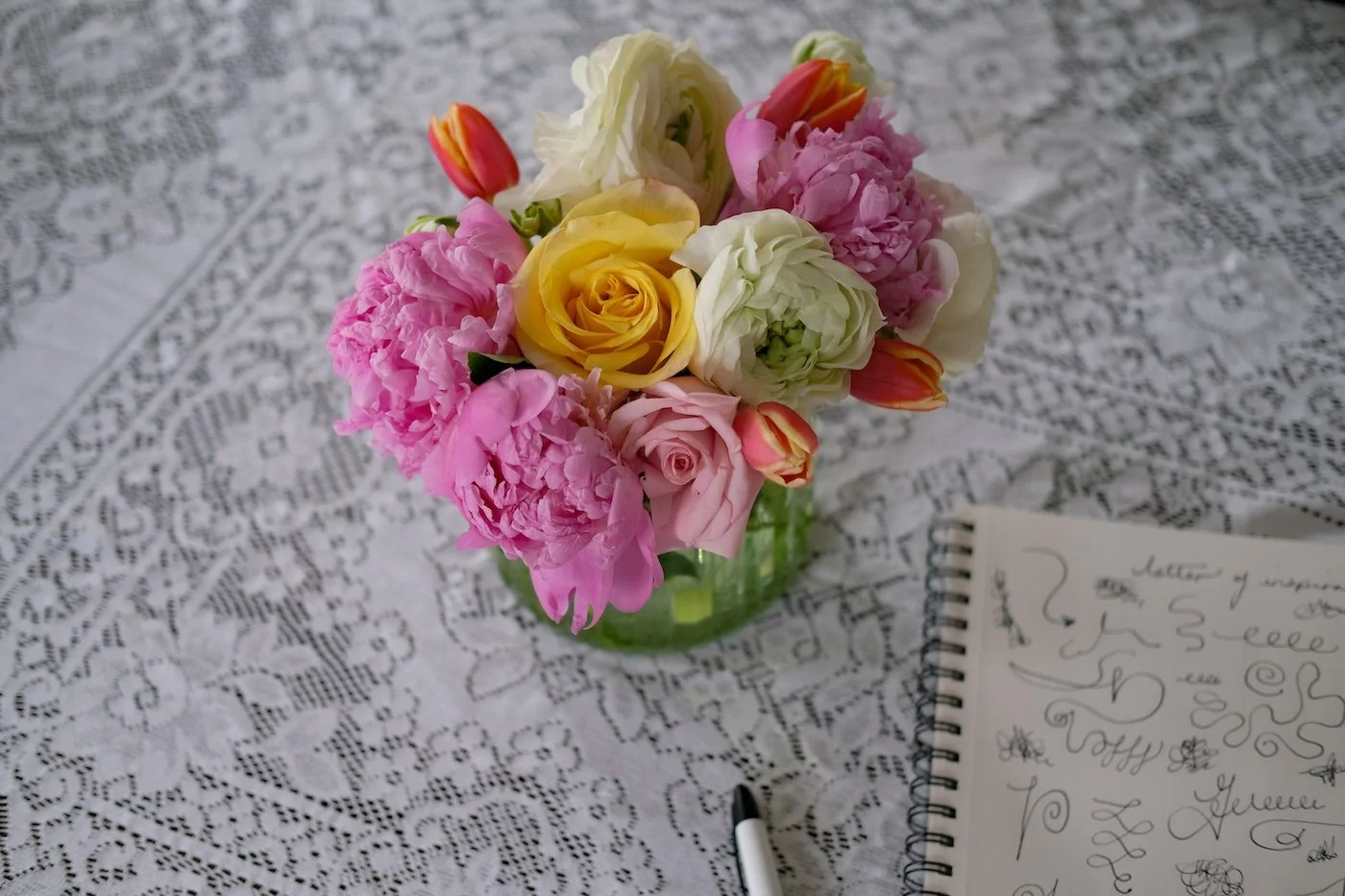Letter of Inspiration
Over the past several years I’ve from time to time met a writer who expresses being stuck or stymied or burned out, and I’ve pretty much always recommended that they try asemic writing as a warm-up exercise. It’s a practice that I often begin my day doing and I think is perhaps useful for anyone creative, or really, just burned out in general. What is asemic writing?
From Peter Schwenger's book on the subject:
“A seme is a unit of meaning, or the smallest unit of meaning (also known as a sememe, analogous with phoneme). An asemic text, then, might be involved with units of language for reasons other than that of producing meaning. As such, the asemic text would seem to be an ideal, an impossibility, but possibly worth pursuing for just that reason.”
In asemic writing, “the sign’s capacity to convey meaning” is eliminated.
More on wikipedia if you’re inclined.
If you follow me on instagram you have possibly seen my funny little angel drawings. A year ago, maybe longer ago, I also began drawing or scribbling something I call a “letter of inspiration” to myself in my morning session. The practice is inspired by Cy Twombly’s series and book, Letter of Resignation. The book is out of print and used copies are cost prohibitive, so I usually am looking at the repros in the Schwenger book.
The art critic John Berger, said of Twombly:
“He doesn’t see language with the readability and clarity of something printed out. He sees it, rather as a terrain full of illegibilities, hidden paths, impasses, surprises, and obscurities….Its obscurities, its lost senses, its self-effacement come about for many reasons — because of the way words modify each other, write themselves over each other, cancel one another out, because the unsaid plays counts for as much, or more, than the said, and because language can never cover what it signifies.”
And so, at first, I was very captivated by the at times restrained anger in the marks in Twombly’s letters. Schwenger says that “the dominant ductus in the Letter of Resignation series, though, is the cancellation scribble…” He says, “For what is a letter of resignation if not a complete rejection of what has come before?” And he says those strokes “sum up the emotional trajectory.” We can read the letters as a series of drafts, says Schwenger, and we can find the writer/artist in the discovery that “the words he has begun to set down are inadequate.” There is a bit of violence in the marks, and no salutation. Who is he quitting? From what does he resign? Well. Who knows. Simultaneously, as he was creating this series, he was also working on his now famous “blackboard paintings.”
I love Twombly’s work and I love the idea of saying things without words in this way. I’d been doing asemic writing for years without having the name for it. I’ve been doing what I’ve always called a morning scribble for a lot of my writing life. It loosens the fingers up, and frees up the brain, in my experience.
So, while I love the letters of resignation, what I wanted at this time was more of a letter of inspiration. A word similar in sound and syllables to resignation. Like Twombly, I have no salutation but I do remind myself what the practice is by writing it at the top of the page. I’m basic like that haha. I write them to calm my nerves, and to get into the flow….to say things that it’s been tricky to say in words.
And by now I’ve written QUITE a few of them lol. I mean, it’s almost funny. Am I inspired yet? Sort of? Yes. Actually yes.
While I’m writing, I’m mainly clearing my mind. I might be listening to CKUA radio (check them out and consider donating to their fundraiser if you haven’t already :) ).
What I’m also doing is thinking about some questions without really coming up with definitive answers.
Where does inspiration come from? How to cultivate it? How to make the space needed for it?
I tell myself: it is my task to create the conditions for my life as an artist, for my life as a fulfilled creative human being. (No one else is going to do that for me). Which leads to the question, what exactly are the conditions for this kind of life now? (And really, what are the conditions for any sort of good life? What are the conditions for receptivity for new ideas? for delight? (seeing it, experiencing it, and creating it?))
Some people really raise asemic writing to a high level of art. My practice is more akin to doodling, realistically. But that’s okay! It’s just a practice that leads me into my practice of writing, and generating ideas for photography etc.
I’d love to know if you try it out and how it goes for you. I’ll be posting more samples on instagram erelong. In the meantime, check out my Pinterest board for samples and inspiration.
Pair with previous posts on Writing Advice, and More Writing Advice.







